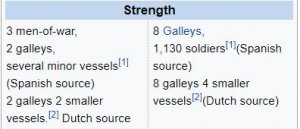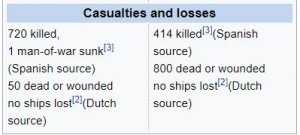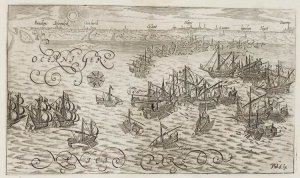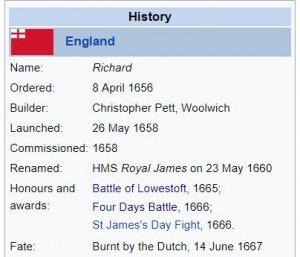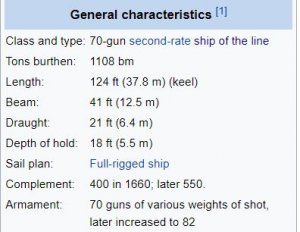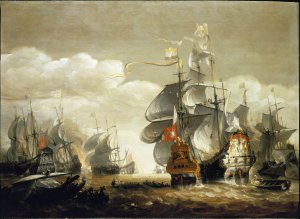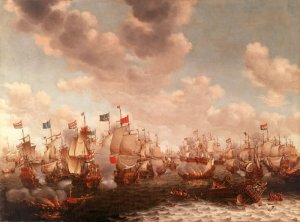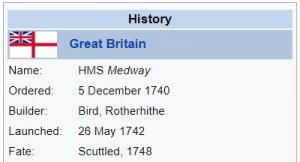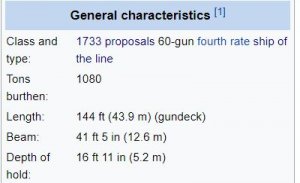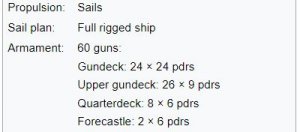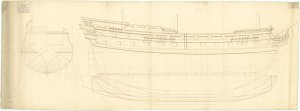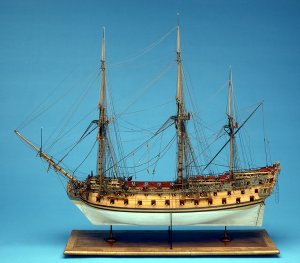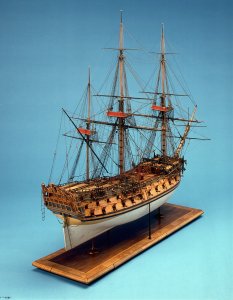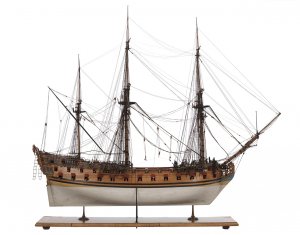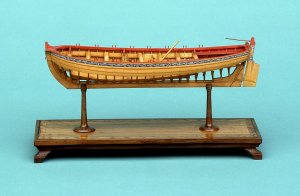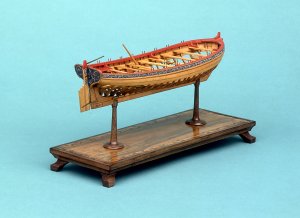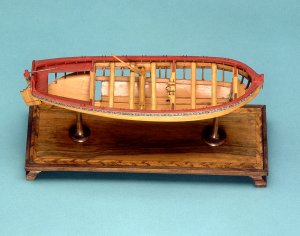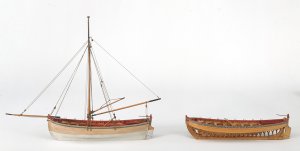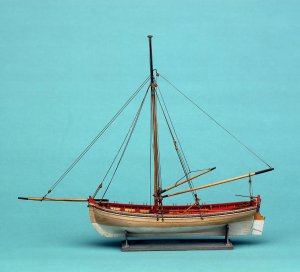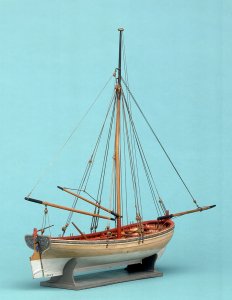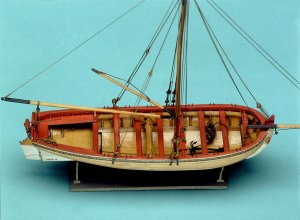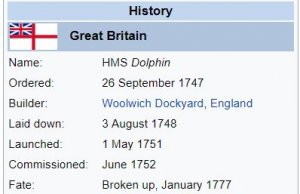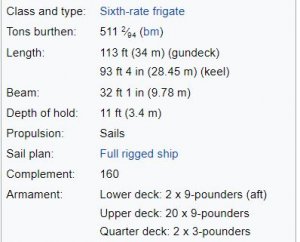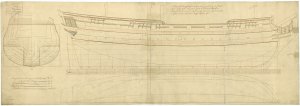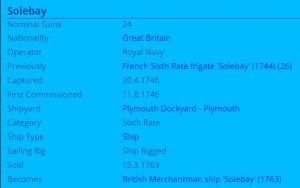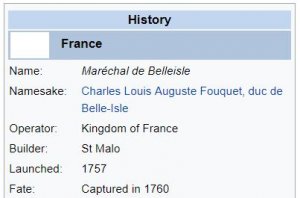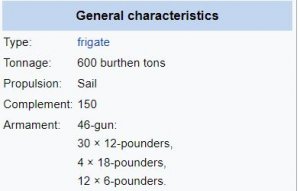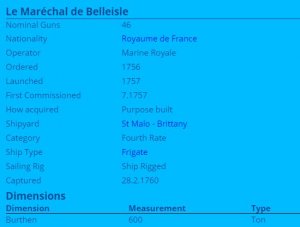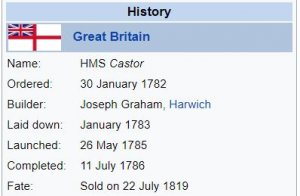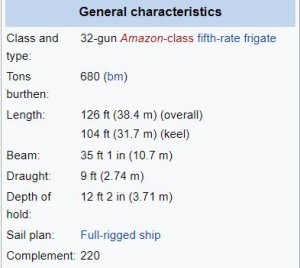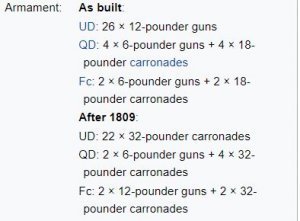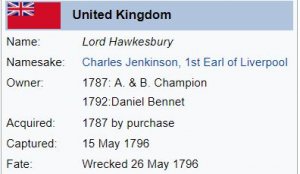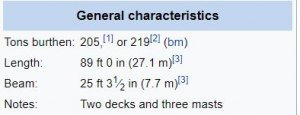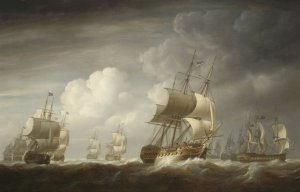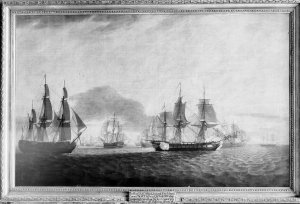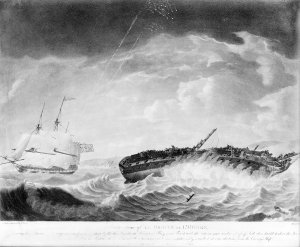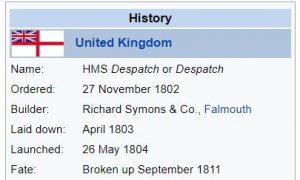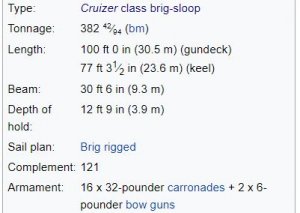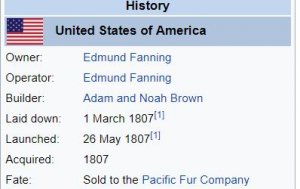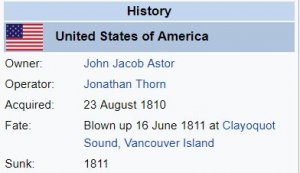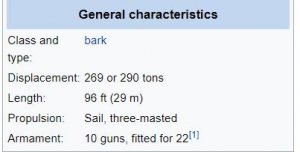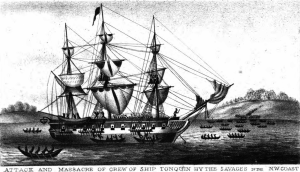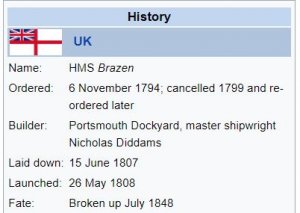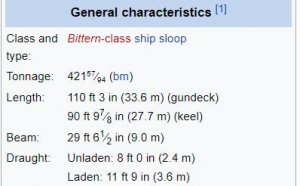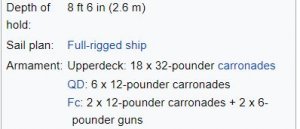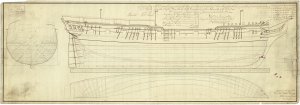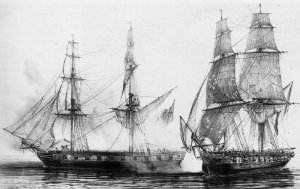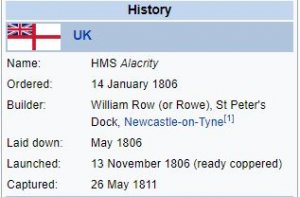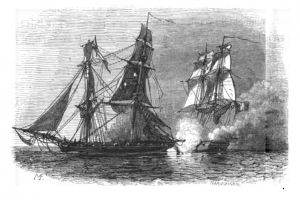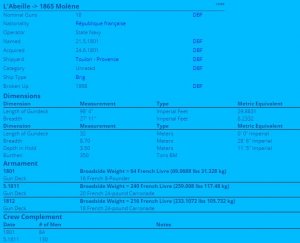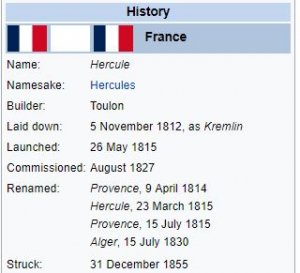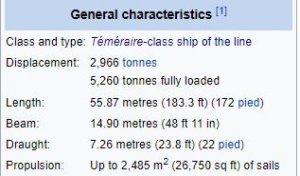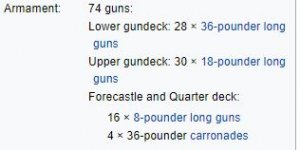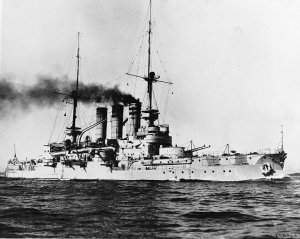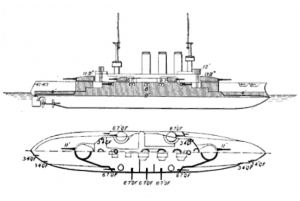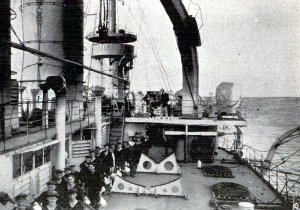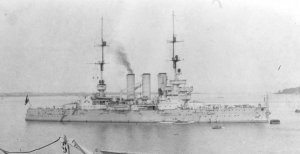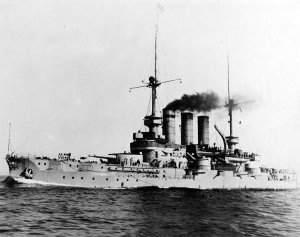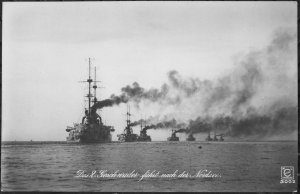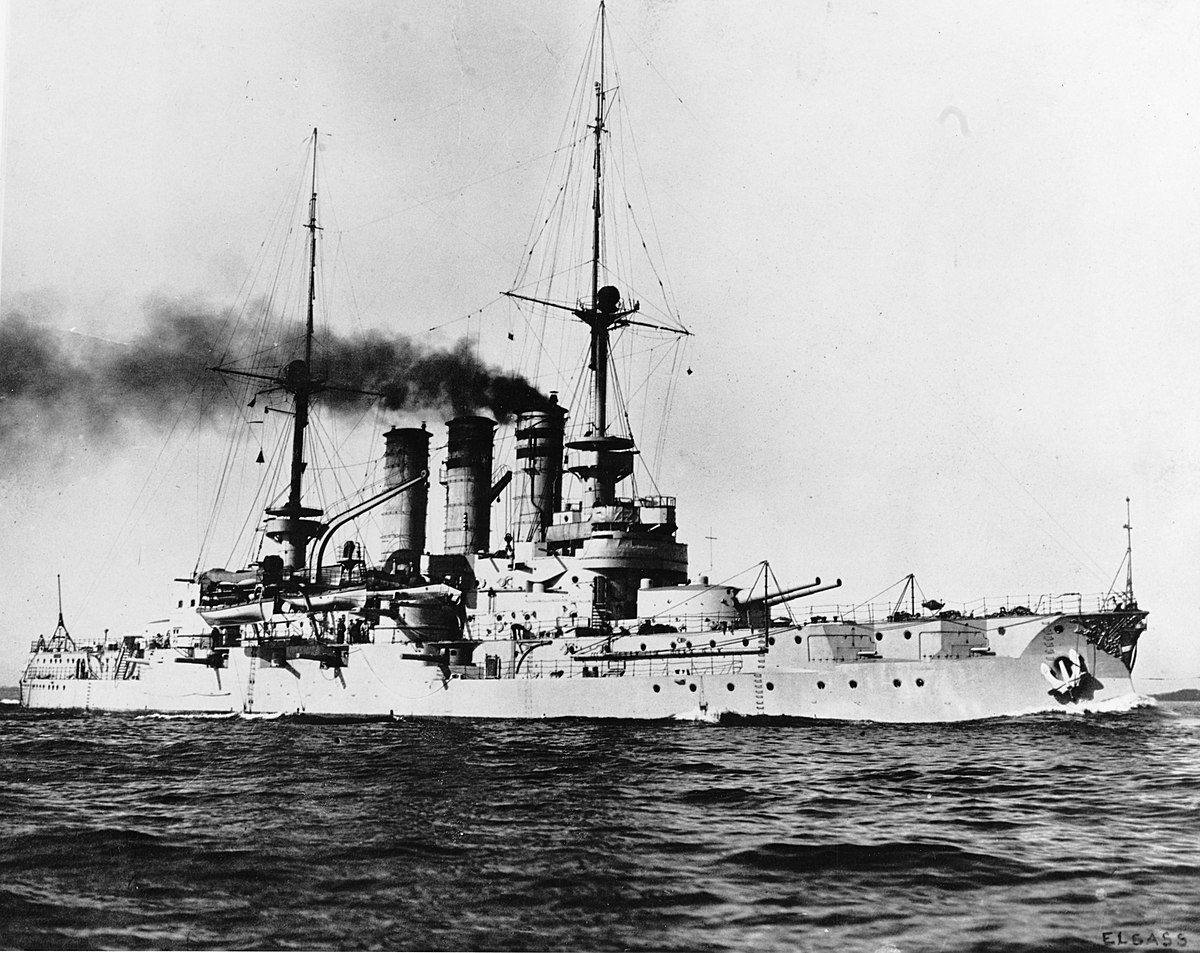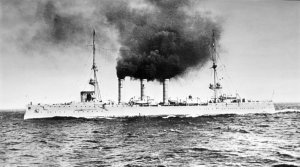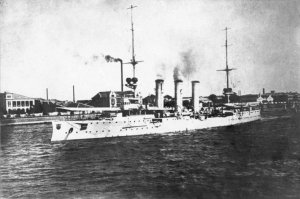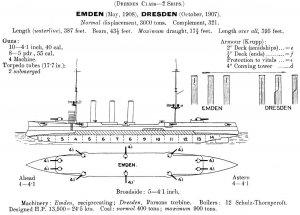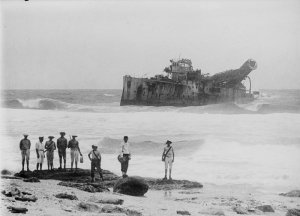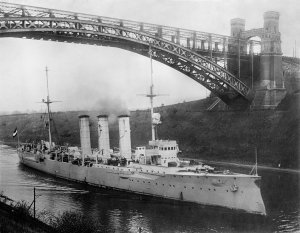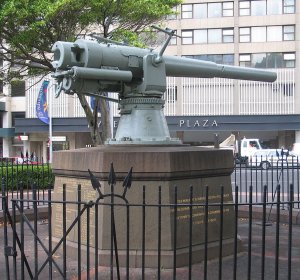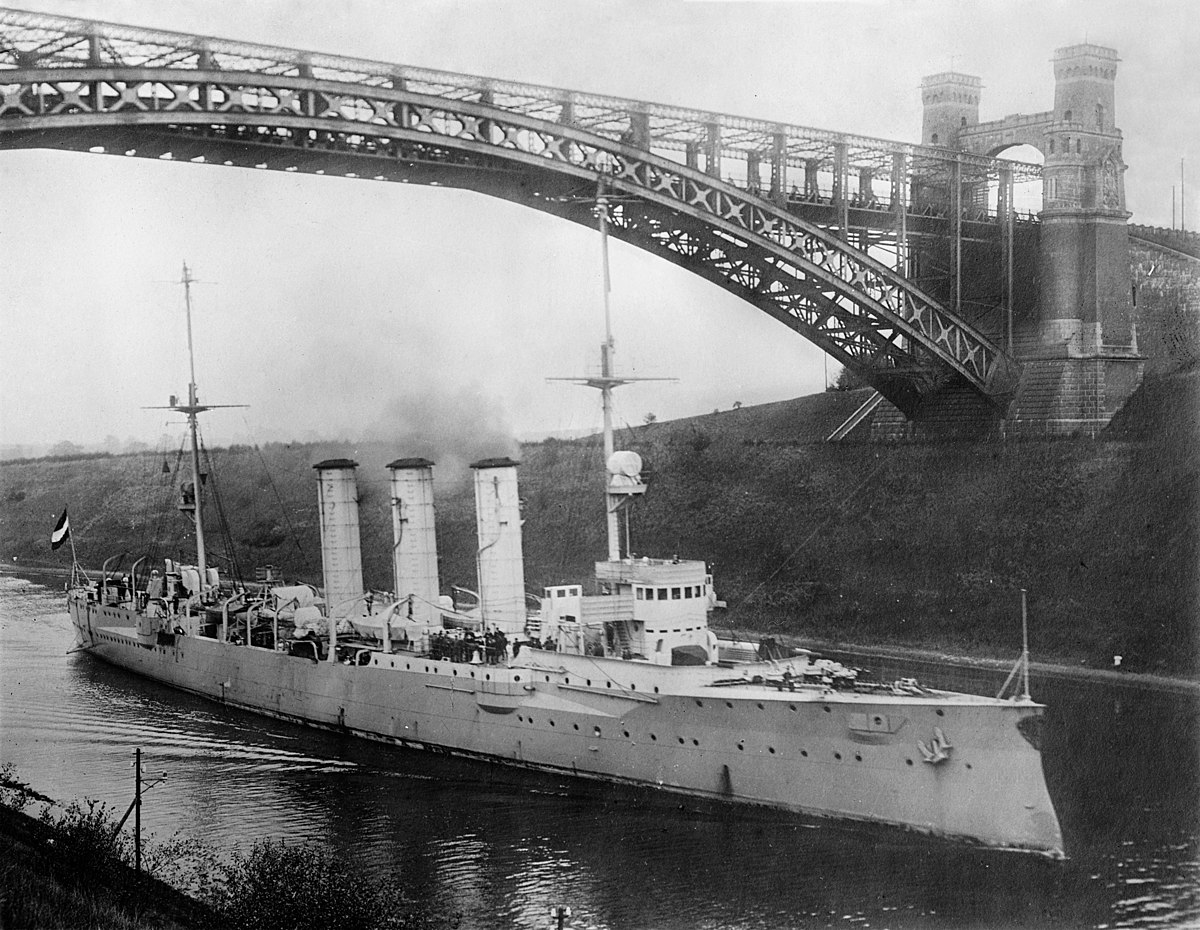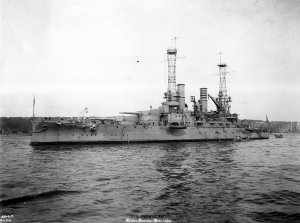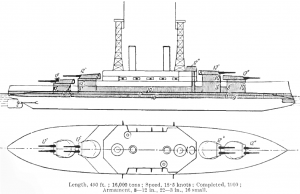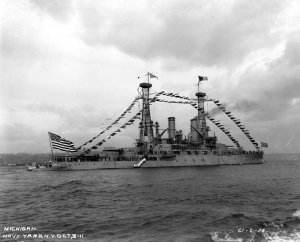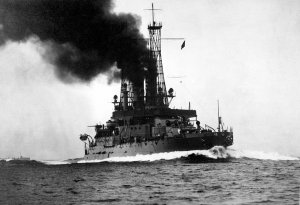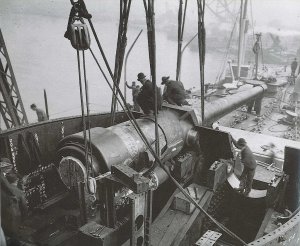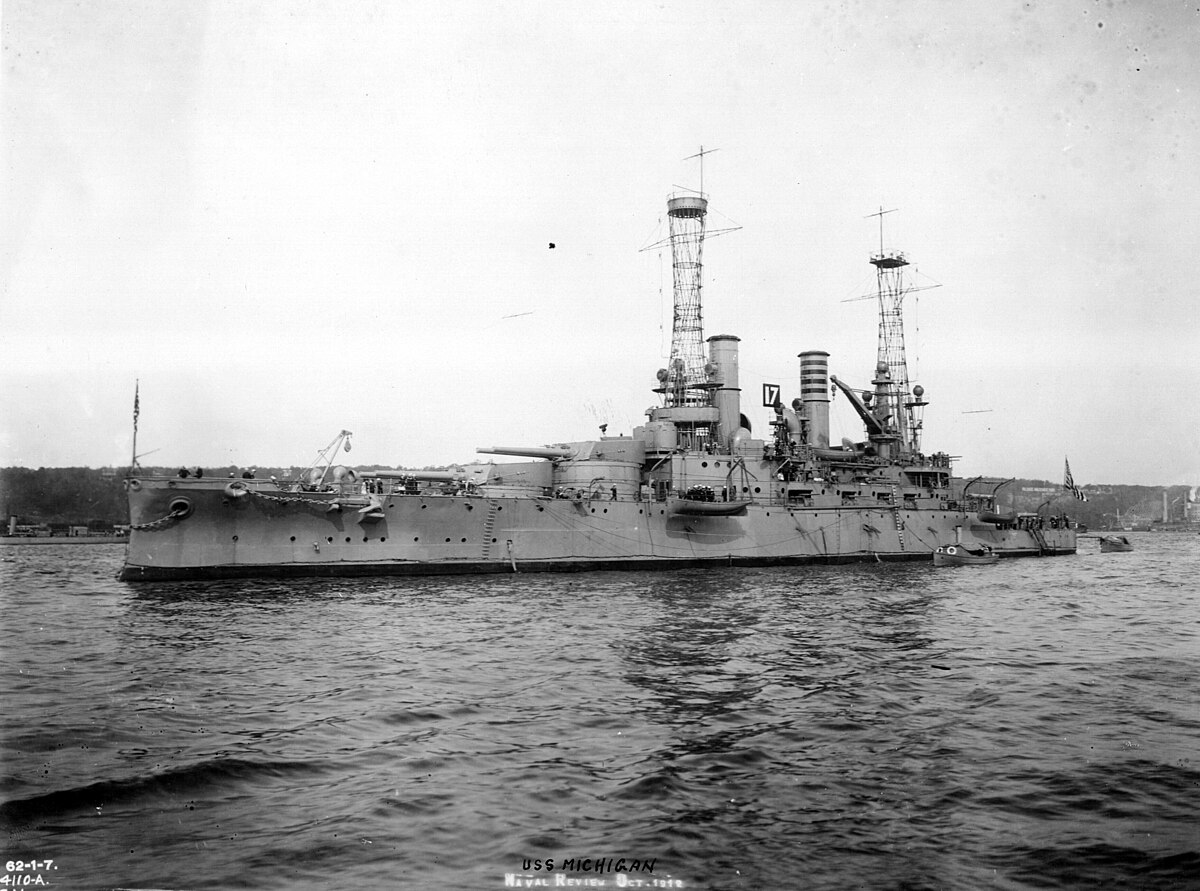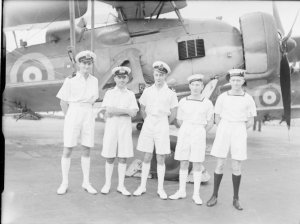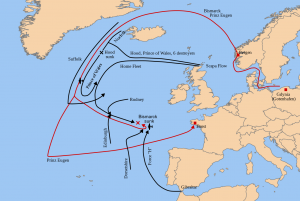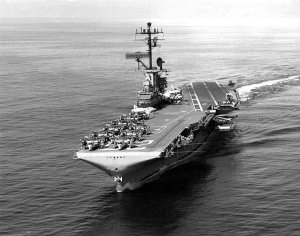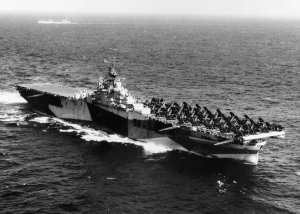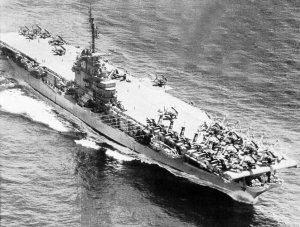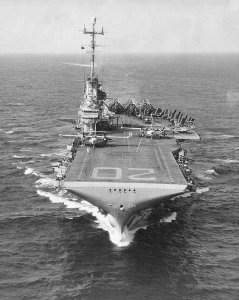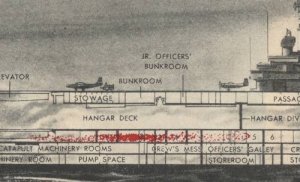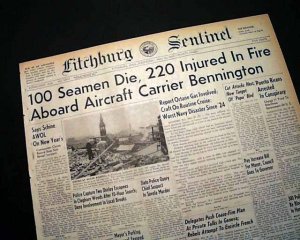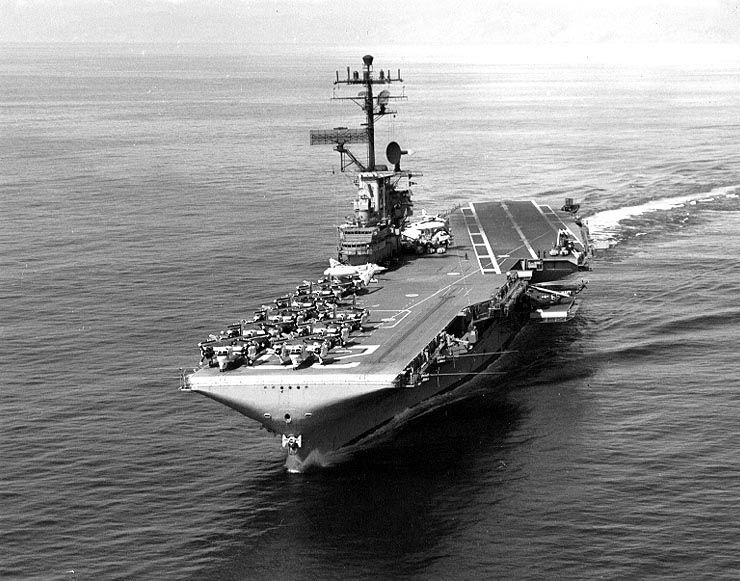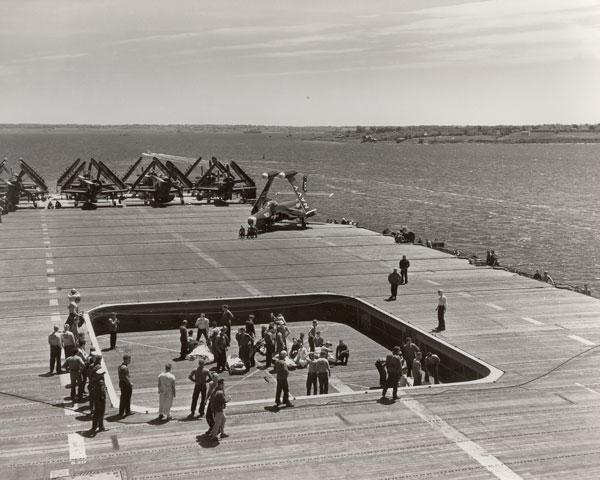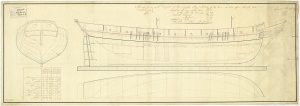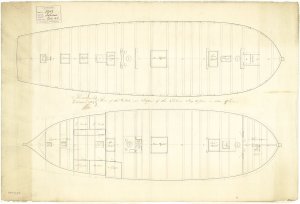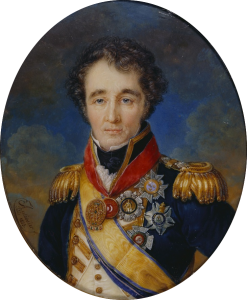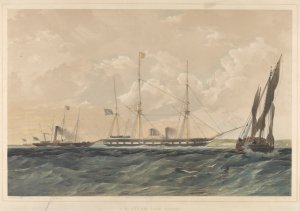Today in Naval History - Naval / Maritime Events in History
26 May 1808 – Launch of HMS Podargus, a Crocus-class brig-sloop of the Royal Navy.
HMS Podargus was a
Crocus-class brig-sloop of the
Royal Navy. She participated in one major battle during the
Gunboat War between Britain and Denmark. After the war she served at
Saint Helena for five or six years. On her return to Britain in 1820 she was laid up; she was finally sold in 1833.
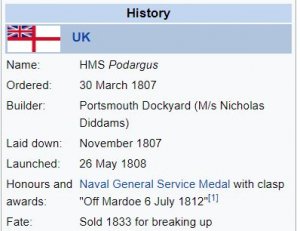
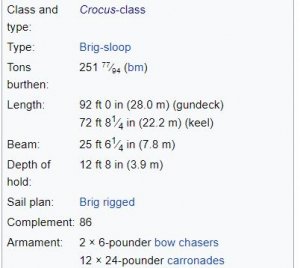
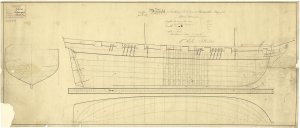 Career
Career
Commander William Hellard commissioned
Podargus in September 1808 for the Downs. On 15 August 1809,
Podargus's master and a master's mate arrived at the French prisoner-of-war prison at Verdun. The master's mate escaped in 1813, but it is not clear how the men came to be captured.
On 19 August 1809
Podargus captured the
Fortuna. Three days later she recaptured the
Margaretha.
Alphea was in sight for the recapture of the
Margretha.
Podargus also carried Major General Broderick and his suite to Corunna.
Commander John Lloyd recommissioned
Podargus in November 1810. On 2 December
Podargus was on station off Boulogne when her crew retrieved an abandoned, swamped Dutch boat. The boat had to be over-turned to bring her on board
Podargus, but even so, money was found aboard her, amounting to 13 gold
guineas, four half-guineas, and some silver French coins. Then in October 1811 Commander John Bradley replaced Lloyd.
Commander William Robilliard commissioned
Podargus in November 1811 for the Baltic. On 4 October 1812
Podargus captured the Danish sloop
Speculation and shared the prize money with
Persian,
Erebus,
Woodlark and
Plover by agreement. Then on 17 October
Persian and
Erebuswere again in company with
Podargus when
Podargus captured the Danish vessels
Anna Maria,
Twende Brodre, and two market-boats. Next month, on 11 November
Podargus captured
Syerstadt, with
Persian and
Erebus in company.
Napoleonic Wars
Main article:
Battle of Lyngør
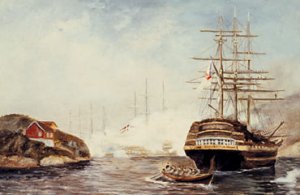
Battle of Lyngør
In 1812, during the Gunboat War, the British saw an opportunity to enforce the blockade and break the back of Dano-Norwegian seapower. They therefore sent a small squadron consisting of the 64-gun
Third Rate ship-of-the-line
Dictator (Captain James Patteson Stewart), and three brigs, the 18-gun
Cruizer class brig-sloopCalypso (Commander Weir),
Podargus, and the 14-gun gun-brig
Flamer (Lieutenant Thomas England), to seek out the Danes. On 6 July 1812, the squadron was off the island of
Merdø on the coast of Norway, when the squadron sighted and chased a Danish squadron.
Robilliard and
Podargus led the British attack because she had a man onboard who had sailed in those waters some time ago; nevertheless, she grounded. During the subsequent Battle of
Lyngør Flamer stayed with her to protect her. However,
Dictator and
Calypso succeeded in destroying the new, 40-gun frigate
Najaden and badly damaging the 18-gun
brigs Laaland,
Samsøe, and
Kiel, as well as a number of gunboats. The British captured and tried to take out
Laaland and
Kiel but abandoned them when they grounded. The British did not set fire to either as the Norwegian vessels still had their crews and wounded aboard.
The action cost
Dictator five killed and 24 wounded,
Calypso three killed, one wounded and two missing,
Podargus nine wounded, and
Flamer one killed and one wounded.
Najaden lost 133 dead and 82 wounded and the Danes acknowledged losing some 300 men killed and wounded overall.
Commander Weir received immediate promotion to
post-captain; Robilliard received his promotion on 14 December;
Dictator's
first lieutenant, William Buchanan, received promotion to commander. In 1847 the surviving British participants were authorized to apply for the clasp "Off Mardoe 6 July 1812" to the Naval General Service Medal.
Several days later the British sent the cutter
Nimble to reconnoiter the situation.
Nimble reported seeing four vessels at Christiansand, two of 18 guns and two of 16 guns.
Nimble also saw numerous gunboats about. The Battle of Lyngør effectively ended the Gunboat War.
Commander George Rennie replaced Robilliard in January 1813.
Podargus then served under
Viscount Keith in the Channel and in the Royal Navy's Bordeaux operations.
On 21 March 1814, Rear-admiral Penrose, in the
74-gun Egmont, anchored in the
Gironde with a squadron that included
Podargus. On 2 April the boats of
Porcupine captured one gun-brig, six gun-boats, one armed schooner, three
chasse-marées, and an imperial barge. They burned one gun-brig, two gun-boats, and one chasse-marée. The squadron shared the subsequent prize money. Two days later, the 74-gun
Centaur joined
Egmont to prepare for to attack the French 74-gun
Régulus, three brig-corvettes, other vessels lying near her, and the batteries that protected them. Before the British could launch their attack, the French burnt
Régulus and the other vessels.
Between June and August 1814,
Podargus was under the temporary command of Commander Houston Stewart. Commander James Wallis then recommissioned her.
On 9 July 1815,
Podargus captured the French vessel
Deux Amis.
Post-war
Wallis sailed
Podargus to St. Helena.
Napoleon Bonapart, though denying any involvement in Captain Wright's death, apparently was quite angry at Wallis being appointed to St Helena, viewing the appointment as a deliberate British provocation.
In April 1817, the transport brig
Emu, belonging to the Cape Town Dockyard, was the first European vessel to enter the
Knysna. She struck a rock, now known as Emu Rock, and was holed. Her crew ran
Emu ashore to prevent her sinking. In late April
Podargus arrived to render assistance. After surveying the area, Wallis sailed
Podargus into the Knysna and retrieved
Emu's cargo.
Commander Henry John Rous recommissioned
Podargus at St Helena in November 1817.
In January 1819, while
Podargus was still at St Helena, the
London Gazette reported that Parliament had voted a grant to all those who had served under the command of Admiral Viscount Keith in 1812, between 1812 and 1814, and in the Gironde.
Podargus was listed among the vessels that had served under Keith in 1813 and 1814. She had also served under Kieth in the Gironde.
Lieutenant James Webb Cairnes was appointed to replace Rous in 1818, however, he did not take command until 1819. Cairnes had been
first lieutenant of
Conqueror. Rous was still in command of
Podargus when he wrote a letter on 29 March 1819 to Admiral
Robert Plampin, extolling the virtues of
Hout Bay, 14 miles from Cape Town, as the site of a dockyard.
Fate
By 1820
Podargus was back in Britain and laid up in
ordinary at Portsmouth. The Admiralty offered her for sale on 7 August 1833, still at Portsmouth. She was sold on that day to Mr. John Small Sedger, Rotherhithe, for £510 for breaking up.
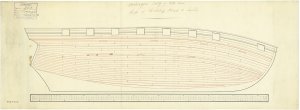
inboard works, expansion of Date: NMM, Progress Book, volume 7, folio 205, states that 'Podargus' was fitted at Portsmouth Dockyard in 1808, repaired at Portsmouth Dockyard in 1809, and had defects repaired at Plymouth Dockyard in 1810
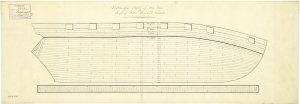
outboard works, expansion of Date: NMM, Progress Book, volume 7, folio 205, states that 'Podargus' was fitted at Portsmouth Dockyard in 1808, repaired at Portsmouth Dockyard in 1809, and had defects repaired at Plymouth Dockyard in 1810
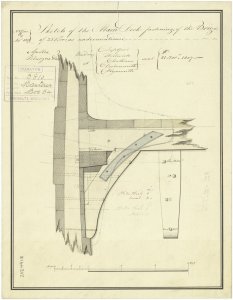
deck fastening (ZAZ4918)
The
Crocus-class brig-sloops were a class of
sloop-of-war built for the
Royal Navy, and were the only Royal Navy brig-sloops ever designed rated for 14 guns. The class was designed by the Surveyors of the Navy (
Sir William Rule and
Sir John Henslow) jointly, and approved on 28 March 1807. Unlike the vast majority of other British brig-sloops built for the Royal Navy in this wartime period, which were built by contractors, construction of the
Crocusclass was confined to the Admiralty's own dockyards. One vessel was ordered from each of the Royal Dockyards (except Sheerness) on 30 March; four more were ordered in 1808 and a final unit in 1810. All the ships of the class survived the Napoleonic Wars and were broken up between 1815 and 1815.
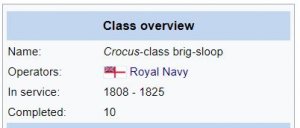 Vessels
Vessels
In the following table, the
Crocus-class brig-sloops are listed in the order in which they were ordered.
 https://en.wikipedia.org/wiki/HMS_Podargus_(1808)
https://en.wikipedia.org/wiki/HMS_Podargus_(1808)

en.wikipedia.org
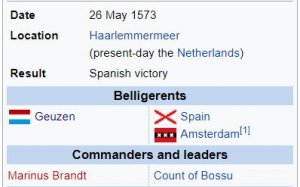

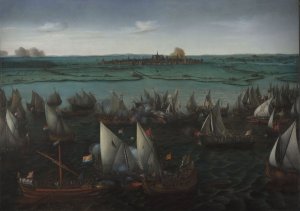
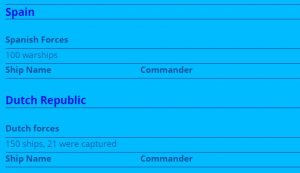

 en.wikipedia.org
en.wikipedia.org









